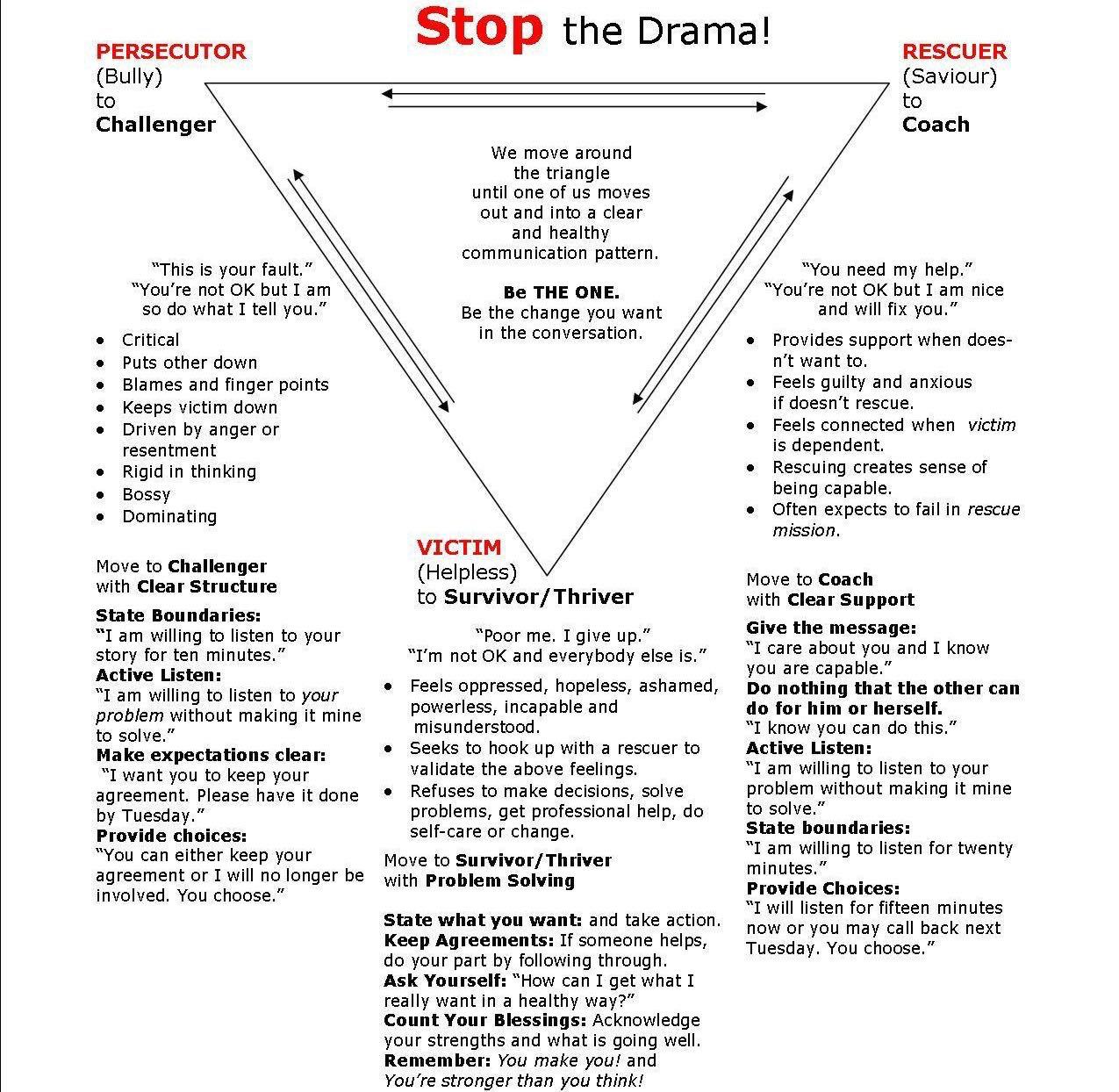

They can not hear or accept a “No." “It’s my way or the highway.”Ĭovert Put Downs (subtle looks, sniggers, withdrawal of affection etc.)Ĭontrol (E.g.: If I can feel like I'm in control, I must be OK / better / stronger etc.) They discount the feelings and importance of the persons who are affected because of their actions. Persecutors behave in such a way that others are inconvenienced or suffer. The deeper invitation to you as you read, is to ask yourself: “What roles do I keep getting hooked into?” Note: When you read through these notes it is easy to think of other people in our lives that we can easily diagnose. Internal means that the drama is within yourself and involves the messages that we give ourselves. If one role is not working, they'll switch to another.ĭrama’s Can be External or Internal: External means that there are other people in your drama.

In a Drama, only one person can occupy one role at each time, but in the space of an argument a person may swap from one role to another very quickly. We don’t usually go into relationships thinking “I really hope I mess this up” do we? Most people have good intensions, but somehow those good intensions get derailed. Getting hooked into a drama is an unconscious and reactive process. The roots of the roles are always found in pain, negative beliefs, shame and insecurity. However, in the Drama Triangle, the driving force behind those needs is always negative. The three roles of the Drama Triangle: Victim, Persecutor and Rescuer are all about getting our needs met. If you stop / pause for a moment, you could probably tell how it was going to end. There is a common script: “I feel like I've been here before!” or “Here we go again!” You can recognize that you are in a triangle when: The Drama Triangle is sometimes called “The Feel Bad Triangle”………Because in the end, everybody feels bad. The below notes are my interpretation of Karpman's original idea - based on my experience in helping people 'move from the drama.' Since then, the Drama Triangle has become a widely used tool for helping people to understand and move from negative patterns of interaction and communication. Stephen Karpman first discussed this model of human interaction in 1968. The Drama Triangle was originally developed through a counselling modality called Transactional Analysis.


 0 kommentar(er)
0 kommentar(er)
